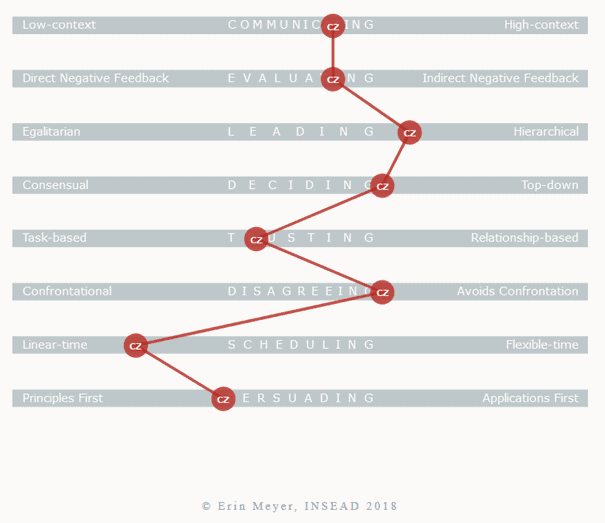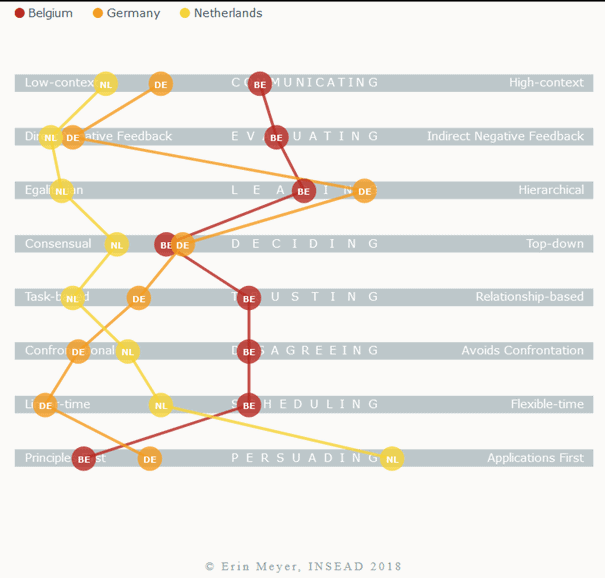„A fish does not know that water is his element until he is taken out of it“. What is your element, what is the environment that you feel comfortable in? What is normal to you? These questions are strongly related to the cultures and way of doing things and communicating things that you were exposed to: in your country, in your school, in your family. For yourself only and spontaneously, please answer the following three questions:
On a scale from 1-10 ....
- How explicit do you communicate and how explicit do you expect others to communicate?
- Do you give negative feedback in a direct way? Do you accept direct negative feedback?
- Is it normal that decisions in a way that includes all team members or rather top-down?
These are just three of the categories that Erin Meyer identified as typical to reveal cultural differences. In her model, the normality in each (national) culture is somewhere between direct and indirect communication, between direct negative feedback or very indirect negative feedback, between egalitarian decision making and top-down decisions by the one and only boss. Across the Euregio Meuse-Rhine, these and other categories can be evaluated quite differently. 26.000 people in the Euregio Meuse-Rhine work in a neighbouring country other than the one they live in. Tenthousand others have a different cultural heritage and came to this border region for work, study or private reasons.
It is not possible to talk about the typical Belgian, German, or Dutch way of life, because we already presuppose a certain normality. Are the Germans punctual? Not in comparison to the Swiss! Are the Dutch egalitarian? Not so much in comparison to the typical Swedish. What is „good“ communication? What is „polite“ or „desirable“ behaviour? Depending on your own background and the answers you gave earlier, typical characteristics might not covert he experience you have in a particular foreign setting. That is why we develop some overarching tools and perspectives so you can boost your own understanding.
Personal range
Let`s say a hypothetical Christina Zimmermann answered the above and some more questions and has a personal profile like the following:

That means she is rather indirect in her negative feedback, has a quite punctual perception of time and accepts, that decisions can (sometimes) be taken top-down. At least this is how she subjectively perceives herself in the environment she lives or works in.
Let’s now take a look on how a (stereo-)typical Belgian, German, or Dutch polite, desirable, positive and „normal“ behaviour would, on average look like:

From the first category, we can see that in Belgian, a more indirect way of communication is common (High vs. Low context), and that negative feedback is given in a more indirect way compared to Germany and the Netherlands.
This graph is by no means applicable for each individual. But it can help you differentiate your personal “normal” and what might irritate – or please you in a new (working) culture.
